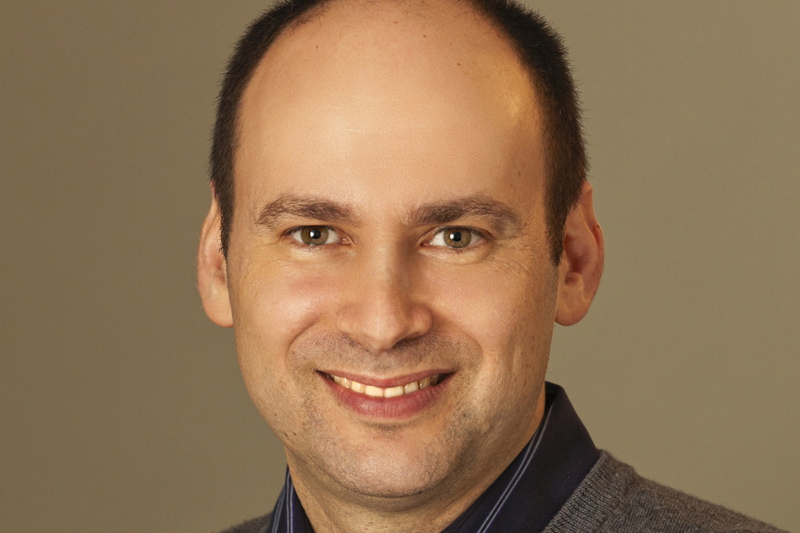Adaptive learning and the need for speed

Roy Kaufman
Roy Kaufman focuses on a promising trend for dynamic, content-empowered learning environments
It bears repeating: different students learn in different ways. Personalised learning is a time-tested educational approach that focuses on individual learners, based on an understanding of their specific needs. Adaptive learning is a 21st century form of personalised learning, now powerfully bolstered by the addition of technology. Adaptive learning environments typically include an algorithmic engine – possibly but not necessarily an AI – that delivers materials to a learner through an iterative process of adaptive interactions. Adaptive learning products are now available in markets from continuing medical education to higher education, K-12, and assessment.
In order to be fully adaptive, publishers (including assessment companies) who offer these products must develop and deliver deep 'item banks' – rich content repositories – with sufficient variety and complexity of materials to satisfy the needs of different types of learners. The depth of variety for these, however, is constrained by each product’s market. For example, a product designed for 8th grade reading will require more variation in its item bank than a continuing medical education program for oncologists. And of course medical students will require more variability than practicing specialists.
Today, most adaptive products are built by organisations which have their own reservoir of high-quality related content, or which use a small number of partnerships to bring in from those who do. For example, the Massachusetts Medical Society offers NEJM Knowledge +, which offers adaptive learning to doctors for continuing education and certification, and which it populates with its own content.
There are situations where, for pedagogical or other reasons, this content approach does not work. For example, in 2011, Smarter Balanced Assessment Consortium (SBAC), a consortium of states, needed thousands of third-party passages in order to test its projected eight million students in accordance with the Common Core State Standards of College and Career Readiness. SBAC was building an 'adaptive engine', whereby machine intelligence would expose different students to different passages based on prior responses to questions and needed the applicable rights quickly.
In response, CCC worked with SBAC to create the first collective license designed for adaptive assessment. SBAC tests millions of students, but some pieces of content are seen by fewer than 10 pupils. This is because adaptive learning solutions expose different pieces of content, even at the same point in the point in the lesson or test. Under the license, rights are cleared in advance on a publisher-by-publisher – as opposed to an item-by item – basis. Fees are set on a per-student basis and vary according factors such as the amount of content seen by the average student.
As the SBAC example shows, there are many unknowns in these large-scale environments that render them unsuitable for traditional transactional licensing. Now that collective licensing is a demonstrated success for adaptive assessment in K-12, it is time to extend the model. As with K-12, there are situations where providers of continuing professional education do not own enough varied content themselves to offer sufficiently robust assessments. This is especially true for start-ups and ed tech companies that develop great adaptive technologies but struggle to combine the technologies with high-quality, classroom- or test-appropriate content.
The most exciting and radically transformative use of this concept is in the market formerly known as 'textbooks'. It is almost a cliché that textbook companies are transitioning into 'content and technology platforms', but there is truth in the changing terminology. Increasingly, content is chunked, divided, and served to learners at their individual pace and level. Even when a curriculum is organised around a basal textbook or system, there is both need and desire for third-party content. For a publisher who wants to reuse third-party content but does not know how many students will use the system, or how many of those students will actually see a given piece of content, seeking permissions is prohibitively complex, time-consuming, and expensive. To avoid this, they overly rely on their own content, public domain content, and openly licensed content. These publishers are willing to pay a reasonable amount but have no way to do so. For the potential licensors, this means a lost revenue opportunity.
This is where collective licensing could help. Under a collective license, the reusing publisher pays a reasonable license fee per student, representing what it would otherwise have to had paid for permissions in a fair transactional model; third-party rightsholders have signed in all rights they own in advance; and editorial teams have a pool of content from which they can choose excerpts and, if they choose from that pool, can immediately use the content under the license. Such a system could quickly unlock the reuse rights for millions of works from hundreds of publishers, and hopefully lead to better learning outcomes. For continuing medical education, that means healthier patients and improved clinical outcomes. For classroom use, that means more successful students.
Roy Kaufman is managing director for business development and government relations at Copyright Clearance Center






